玉田俊平太「自らを破壊するものだけが生き残るデジタルカメラの世界」

玉田俊平太「自らを破壊するものだけが生き残るデジタルカメラの世界」

日本のイノベーションのジレンマ :
破壊的イノベーターになるための7つのステップ / 玉田俊平太著、翔泳社 , 2015年の第7章(07-Stamada_jap_innv_dillem-7.pdf)を解説します。
| 1 |
145 |
破壊的イノベーターだったジョージ・
イーストマン ・ジョージ・イーストマン( George Eastman, 1854-1932) U.S. patent no. 388,850, issued to George Eastman, September 4, 1888 |
| 2 |
147 |
イーストマンによる最初のイノベーショ
ン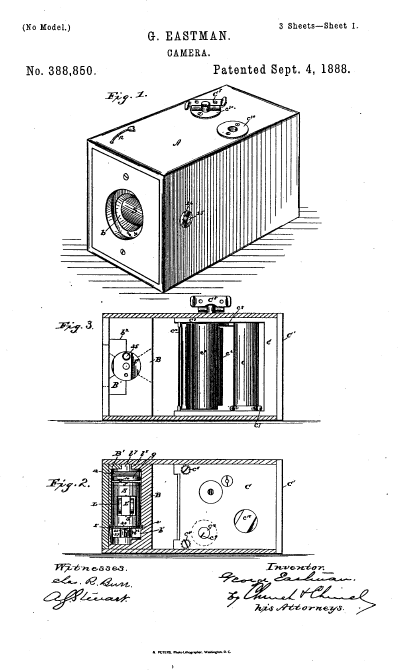 U.S. patent no. 388,850, issued to George Eastman, September 4, 1888 イーストマン・コダック社とは「アメリカの発明家であるジョー ジ・イーストマン(1854-1932)によって設立された写真用品メーカーのこと。イーストマンは、それまで主流であった写真原版の基底材であったガラ ス版から、感光乳剤を塗ったロールフィルムにすることで、連続撮影のスピードを高速化した。1888年には、ロールフィルム・カメラの特許を取得。「コ ダック(Kodak)」の商標によって、「You press the button, we do the rest(あなたがボタンを押せば、あとはわれわれが行ないます)」という有名な宣伝文句を伴って売 り出されたこのカメラは、現像や焼き付けといった写真の複雑な工程を必要とせず、カメラの大衆化を促すことになった。92年には、今日まで至る「イースト マン・コダック社」を設立。1900年にはブローニー・カメラを1ドルで売り出し、写真のさらなる普及を担うことになる。イーストマンによるこれらの発明 や製品開発に基づく写真環境のインフラ開発によって、写真というメディアは高速化、簡便化、大衆化を果たすことになった」https://bit.ly/2TmQAB4 銀塩写真(Gelatin silver process)を破壊するイノベーションとしてのKODAK |
| 3 |
148 |
ローラーホルダーでは賞はもらったけれ
ど |
| 4 |
149 |
KODAKという新しいブランドの誕生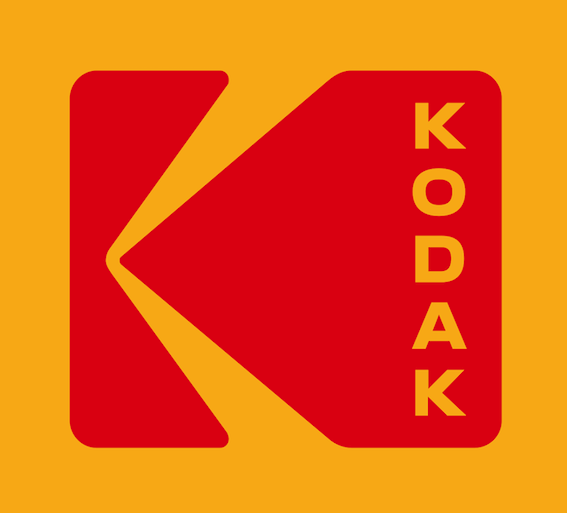 |
| 5 |
150 |
勝利の方程式ともいうべきビジネスモデ
ル |
| 6 |
152 |
世界の覇者、コダックを破壊したものは 2012年、コダックの破綻(→2013年に再上場)The Eastman Kodak Company. |
| 7 |
153 |
優良企業が陥りがちな「資本家のジレン
マ」 ——「世界は資本であふれている。資本コストはゼロに近い状態である。しかし、企業は純資産を増大させる市場創造のイノベーションに投資を振り向けるのに 苦労しているようだ」(玉田 2015:155) 富士フィルム  「日本の精密化学メーカーである。カメラ、デジタルカメラ、一般・エックス線写真・映画用フィルムから印画紙(プリント)、現像装置などに至る写真システ ムの一式、複写機などのOA機器などのほか、ディスプレイ用フィルム部材、刷版、印刷システム、医薬品、医療機器、化粧品、健康食品や高機能化学品も製 造・販売」富士フイルム) |
| 8 |
156 |
当初、主要顧客に見向きもされなかった
デジタルカメラ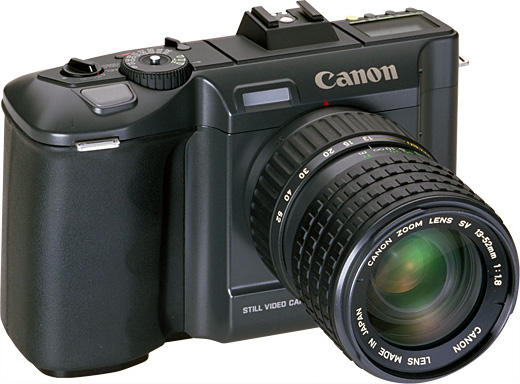 RC-701は、 「1986年に、最初に発売されたスチルビデオカメラ。RC-701は、撮影画像を水平方向780画素のCCDを利用して電気信号に変換し、記録媒体であ るフロッピーに即時記録することができる。このフロッピーは、業界統一フォーマットとして規格化されたスチルビデオフロッピーで、一枚にフィールド記録で 50画面記録が可能」だった(390,000円)。  "Before the development of the FUJIX DS-1P, still video cameras using an analog format were the main type of electronic camera. They stored frames to a magnetic medium called a video floppy. Back then, semiconductor memory was extremely expensive, and the idea of saving photographs in a digital format and viewing them on the low-performance personal computers of the time did not seem viable. Although video floppies were inexpensive, their data capacity was poor, and imperfect rotation could negatively impact image quality."- A photographic film producer develops the world’s first fully digital camera.  Apple QuickTake, "The Apple QuickTake (codenamed Venus, Mars, Neptune) is one of the first consumer digital camera lines.[1] It was launched in 1994 by Apple Computer and was marketed for three years before being discontinued in 1997. Three models of the product were built including the 100 and 150, both built by Kodak; and the 200, built by Fujifilm. The QuickTake cameras had a resolution of 640 x 480 pixels maximum (0.3 Mpx)."-Apple QuickTake. |
| 9 |
157 |
「闇研」から誕生したカシオのQV-
10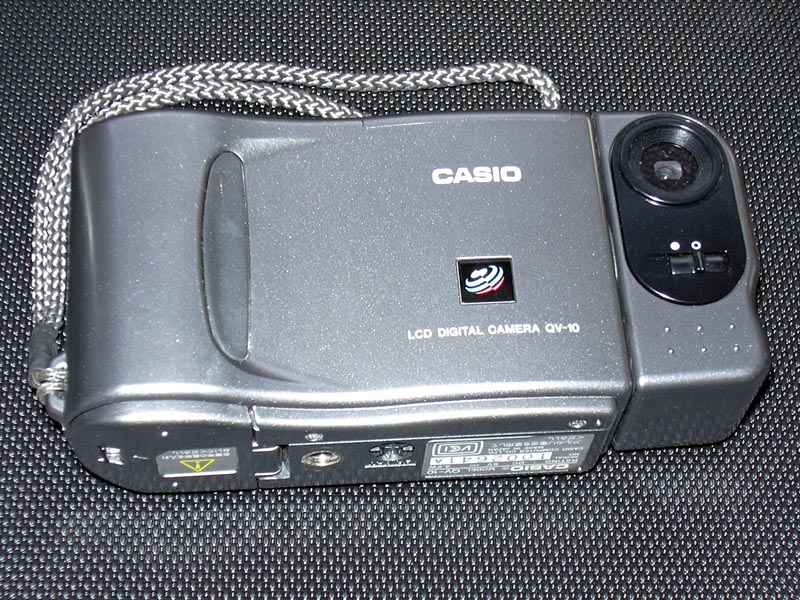 「カシオQV-10 は“カメラ付きテレビ”として開発された!」 「QV-10以前には、「VS-101」(1987年発売)というフロッピーディスクに画像をアナログ記録するカメラを開発。「フィルムがいらず、フィル ムの消費を気にしなくていい。テレビですぐに見られる。モデムで画像を転送できるというコンセプトだった」」(末高氏) 「1995年から2000年にかけて続々と他社もデジタルカメラ参入を果たす。多くのメーカーが銀塩カメラの画質を目指す中、カシオはそこまでの画質は必 要ないという考えで進めていたところ、販売に苦戦する。/このままではまずいということで、研究開発部門を強化。客観的に検証して開発方針を見直した。そ こで誕生したのが世界最薄のカードサイズを謳う初代EXILIMの「EXILIM EX-S1」(2002年発売)だ」同記事) |
| 10 |
159 |
カシオのQV-10は、デジタル版の KODAK |
| 11 |
161 |
フィルムかめらを「破壊」したデジタル
カメラ |
| 12 |
162 |
ミラーレス一眼は破壊的イノベーションか ・ミラーレス一眼:「ミラーレス一眼カメラ(ミラーレスいちがんカメラ)とはデジタルカメラの分類のひとつで、一眼レフカメラの光学式ファインダーの代わ りに電子ビューファインダーや液晶ディスプレイを通じて像を確認する形式のレンズ交 換式デジタルカメラの総称である」ミラーレス一眼カメラ) |
| 13 |
164 |
一眼レフ市場参入が悲願だったパナソ
ニックとオリンパス |
| 14 |
167 |
理論通り、自己破壊を避けたニコン |
| 15 |
169 |
ついに、自らを破壊する道へと踏み出し
たキャノン |
| 16 |
170 |
破壊する側とされる側が同居するソニー |
| 17 |
172 |
一眼レフ市場の「破壊」のカウントダウ
ンが始まる |
| 番外 |
スマホ搭載のカメラの時代へ 「デジカメ市場が七重苦にあえいでいる。3月の販売台数が前年比で50.0%と半減。販売金額は、48.3%と半減を上回る大幅な縮小に見舞われている。 デジカメ市場は、もともとスマートホン(スマホ)の台頭による市場縮小に苦しんでいたが、10月の増税が追い打ちをかけていた。加えて、折からの新型コロ ナウイルス感染症拡大の影響が降りかかっている。スマホの台頭、増税と二つの要素に加え、大規模イベントの中止や延期、サプライチェーンの障害、外出自 粛、身近なイベントの中止・延期、販売店一時閉店が加わり、マイナス要因が7つも積み重なっている」デジカメ市場「七重苦」、3月の売り上げ半減で生死を 分ける「新型コロナ後」戦略)  サプライチェーン(Supply chain)とは、顧客に届くまでの複数企業間の流れのことである。 "In business and finance, supply chain is a system of organizations, people, activities, information, and resources involved in supplying a product or service to a consumer. Supply chain activities involve the transformation of natural resources, raw materials, and components into a finished product that is delivered to the customer.[3] In sophisticated supply chain systems, used products may re-enter the supply chain at any point where residual value is recyclable. Supply chains link value chains.[4]" 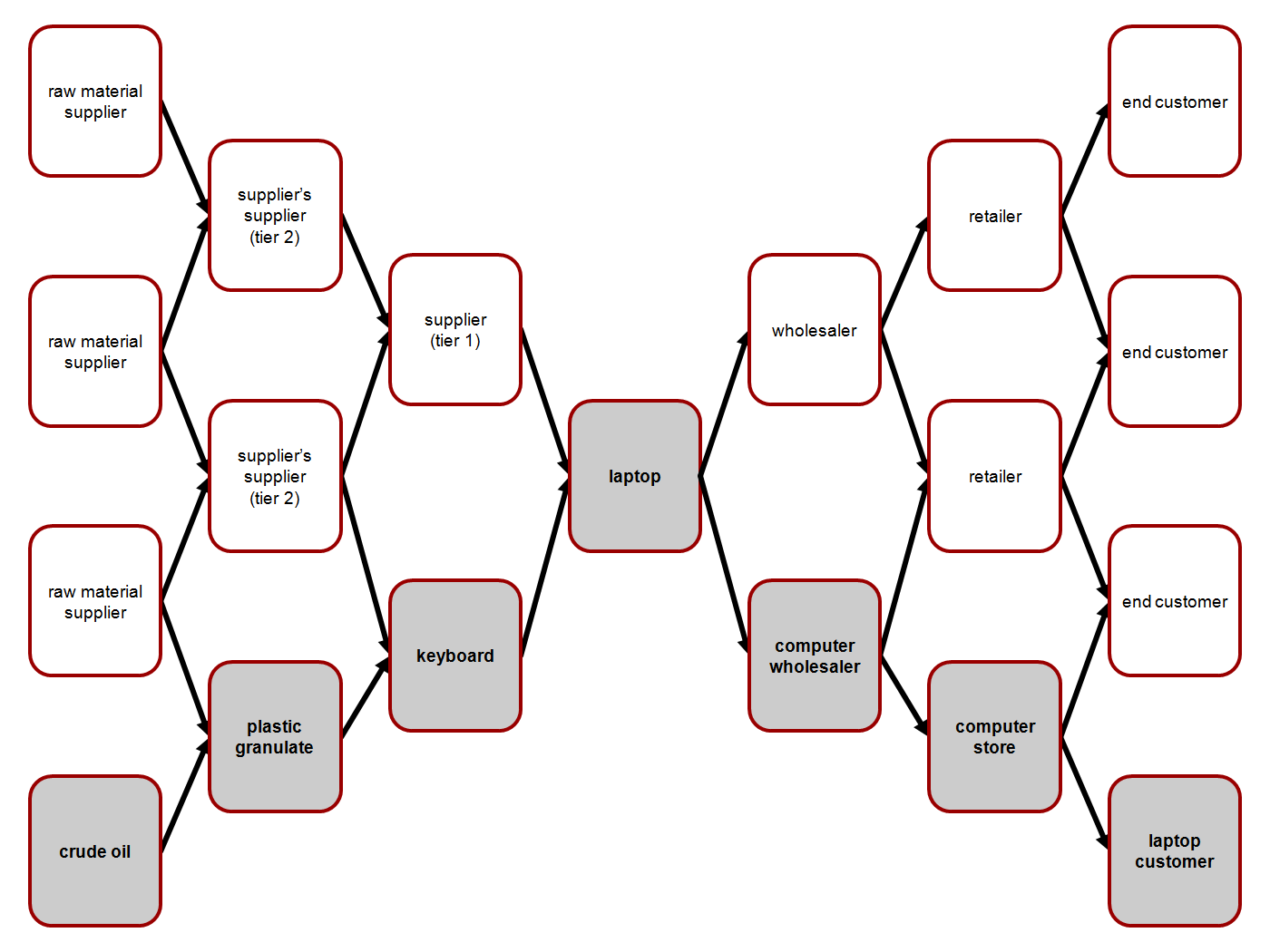 A chain is actually a complex and dynamic supply and demand network.[1] サプライ・チェーン・マネジメント(supply chain management、SCM)、供給連鎖管理(きょうきゅうれんさかんり)とは、物流システムをある1つの企業の内部に限定するこ となく、複数の企業間で統合的な物流システムを構築し、経営の成果を高めるためのマネジメント手法である」サプライ・チェーン・マネジメント) "A value chain is a set of activities that a firm operating in a specific industry performs in order to deliver a valuable product (i.e., good and/or service) for the market. The concept comes through business management and was first described by Michael Porter in his 1985 best-seller, Competitive Advantage: Creating and Sustaining Superior Performance.[1]"  Michael Porter's value chain. 『競 争優位の戦略――いかに高業績を持続させるか』土岐坤・中辻萬治・小野寺武夫訳、ダイヤモンド社, 1985年 |
A chain is actually a complex and dynamic supply and demand network.- Wieland, Andreas; Wallenburg, Carl Marcus (2011). Supply-Chain-Management in stürmischen Zeiten (in German). Berlin: Universitätsverlag der TU
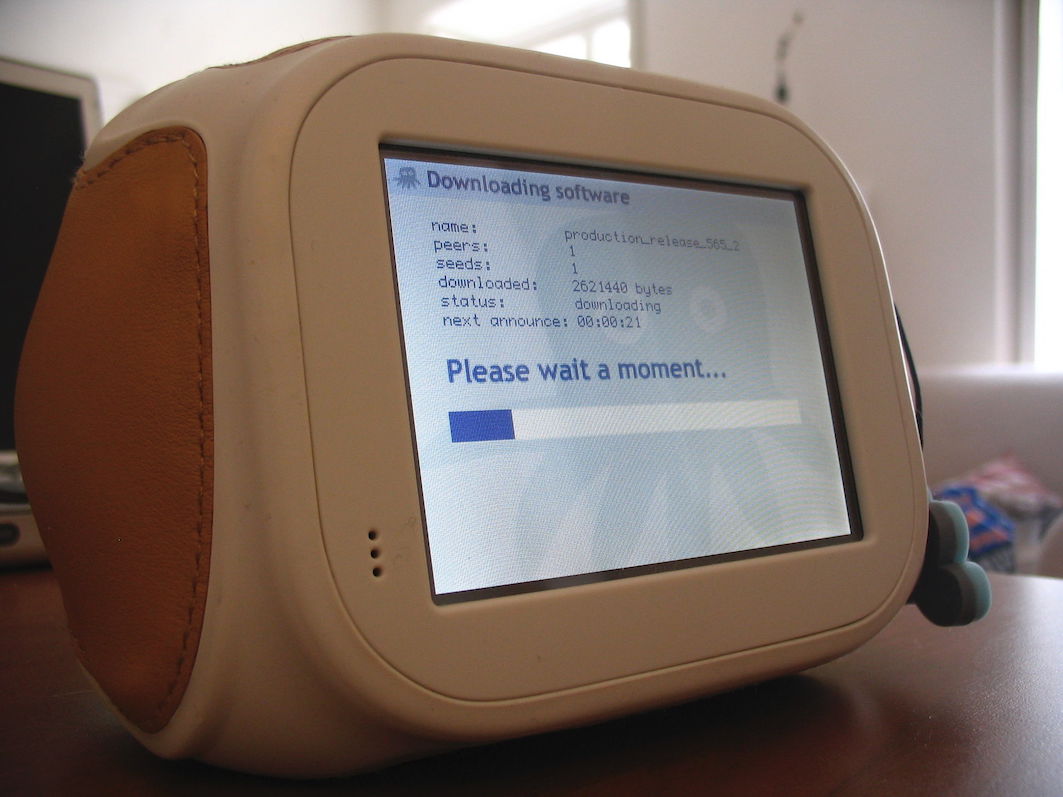
”The Chumby is
a consumer electronics product formerly made by Chumby Industries, Inc.
It is an embedded computer which provides Internet and LAN access via a
Wi-Fi connection. Through this connection, the Chumby runs various
software widgets. In 2010 Sony introduced a single product based on an
offshoot version of Chumby, the Sony Dash.”
リンク
●Andrew Huang, 1975-
"Andrew
"bunnie" Huang (born 1975) is an American researcher and
hacker,[1] who holds a Ph.D in electrical engineering from MIT and is
the author of the freely available 2003 book Hacking the Xbox: An
Introduction to Reverse Engineering. As of 2012 he resides in
Singapore.[2]"- https://en.wikipedia.org/wiki/Andrew_Huang_(hacker).
"Huang
has a long and noted history with the reverse engineering and hacking
of consumer products. His 2003 publication Hacking the Xbox: An
Introduction to Reverse Engineering was one of the first published
works regarding the reverse engineering of a high end consumer product.
He faced significant legal pressure from Microsoft to not reveal the
details of his exploits, and the book itself reveals that he had
received a letter from MIT, where he was at the time a student,
informing him of their disavowal of any association with his project.
Additionally, his publisher John Wiley & Sons had rescinded their
intent to publish the book.[13]
microSD cards: genuine & questionable
In part because of this response by MIT to his work, when the Institute
was again put at the forefront of controversy in their handling of the
criminal prosecution brought against Aaron Swartz, and his subsequent
suicide, Huang released the book for free through No Starch Press,
remarking that "Without the right to tinker and explore, we risk
becoming enslaved by technology; and the more we exercise the right to
hack, the harder it will be to take that right away".[14][15]
In 2005, Huang worked with a team from the Electronic Frontier
Foundation to develop code that interprets printer steganography
markings.[16]
Huang created the NeTV in 2011, which was the first known public use of
the High-bandwidth Digital Content Protection (HDCP) "master key". The
device uses the master key to implement a video overlay on existing
HDCP-protected links, in a fashion which purportedly does not violate
the DMCA.[17] Both the hardware and firmware for the NeTV are openly
available under the CC-BY-SA license.[18]
He has also used reverse engineering techniques to reveal why certain
MicroSD cards are poor in quality.[19][20] In 2013, he presented
results in collaboration with fellow Singapore developer Sean "xobs"
Cross revealing methods to load arbitrary code into microSD cards via
backdoors built into the embedded controller.[21][22]
On 21 July 2016, Huang and Edward Snowden, in a talk at MIT Media Lab's
Forbidden Research event, published research for a smartphone case, the
so-called "Introspection Engine", that would monitor signals received
and sent by that phone to provide an alert to the user if their phone
is transmitting or receiving information when it shouldn't be (for
example, when it's turned off or in airplane mode), a feature described
by Snowden to be useful for journalists or activists operating under
hostile governments that would otherwise track their activities through
their phones.[23][24][25][26][27]"
問題集
文献
その他の情報
Copyleft, CC, Mitzub'ixi Quq Chi'j, 1997-2099
Do not paste, but
[Re]Think our message for all undergraduate
students!!!